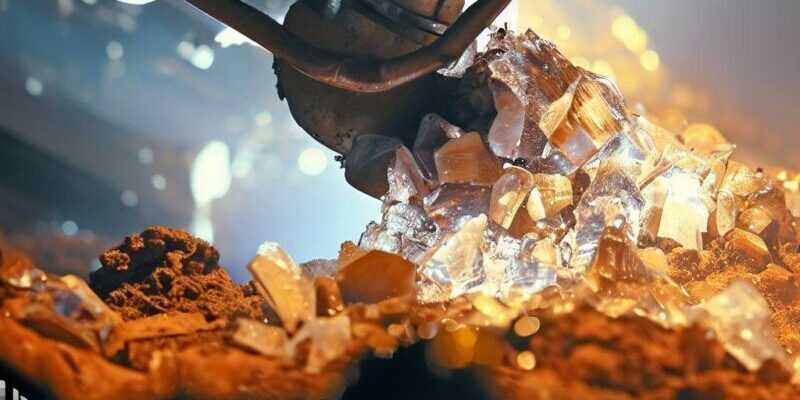Diamonds, the dazzling gemstones that have captured human fascination for centuries, are born from the depths of the Earth in a process that spans millions of years.
These precious gems hold within them the secrets of immense pressure, heat, and time, resulting in their unparalleled brilliance and enduring allure.
The Geological Crucible: Diamonds begin their journey deep within the Earth’s mantle, approximately 90 to 120 miles below the surface.
Here, extreme temperatures reach thousands of degrees Celsius, and intense pressure, around 725,000 pounds per square inch, creates the perfect conditions for diamond formation.
This high-pressure environment forces carbon atoms into a unique crystal lattice structure, giving rise to the remarkable hardness and luster that diamonds are renowned for.
Carbon’s Transformation: The primary element that constitutes diamonds is carbon, the same element found in pencil lead and charcoal.
However, the transformation from these common forms of carbon to the exquisite gemstone is a complex and gradual process.
Carbon-rich fluids, carrying tiny carbon particles, rise through volcanic conduits known as kimberlite pipes, which provide a conduit for diamonds to travel to the Earth’s surface.
These pipes are like natural elevators, carrying diamonds from their birthplace to where they can be discovered by humans.
The Journey to the Surface: The ascent of diamonds from the mantle to the surface is a journey that takes millions of years.
As the carbon-rich magma rises, it cools and solidifies, forming volcanic rock structures known as kimberlite pipes.
These pipes can remain hidden beneath the Earth’s surface for ages before volcanic activity, erosion, or other geological forces bring them to light.
The Diamond’s Arrival: When the kimberlite pipes finally breach the Earth’s surface through volcanic eruptions, they bring along with them diamonds that were formed deep within the Earth.
This explosive process is what allows humans to eventually discover and mine these precious gems. However, only a small percentage of kimberlite pipes contain diamonds that are of gem-quality, making the finding and extraction of these treasures a true feat.
The story of diamond formation is one of patience, pressure, and geological wonder. These gems, with their radiant beauty and symbolism of endurance, are the result of a journey that begins deep within the Earth’s mantle and ends with their dazzling presence in the hands of humans.
From their creation under immense pressure to their ascent through volcanic conduits, diamonds continue to remind us of the incredible forces that shape our planet and the timeless allure of the natural world.
![]()




